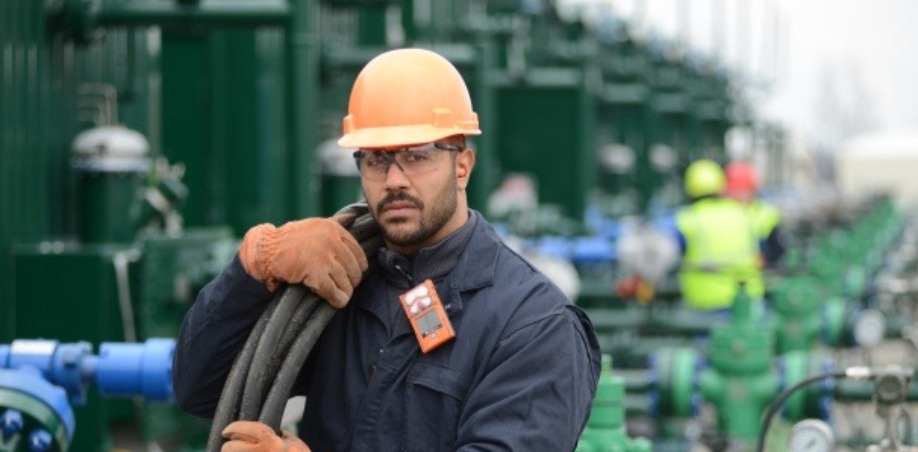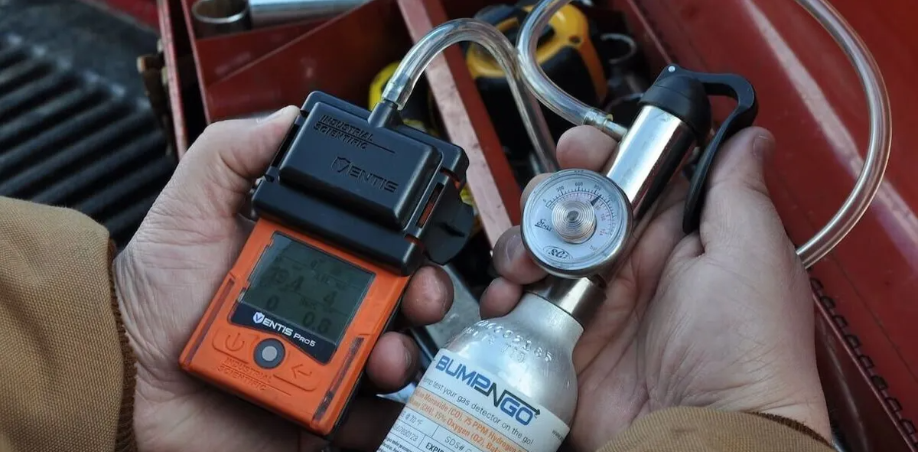Gas Monitors: How to Choose the Right One

In industries where toxic gasses pose a significant risk, gas monitors are essential tools for ensuring worker safety. These devices detect dangerous gasses in the air, providing real-time alerts that can prevent accidents, health issues, and fatalities. Each type of gas monitor is designed for different environments and applications, so it’s important to understand what will best suit your needs. This blog will guide you through what a gas monitor is, the various types of gas monitors, and how to choose the right gas monitor.
What is a Gas Monitor?
A gas monitor is a device used to detect the presence of hazardous gasses in the environment. Whether these gasses are toxic or combustible, gas monitors are designed to identify their concentration levels and alert users to dangerous conditions. Depending on the model, gas monitors can detect a single gas or multiple gasses simultaneously, making them versatile tools for various industries.

The Different Types of Gas Monitors
There are several types of gas monitors available, each with specific uses and advantages. Let’s explore the primary types to help you understand which one may be right for your industry:
Single-Gas Monitors: As the name suggests, single-gas monitors are designed to detect one specific gas. These are often used in environments where only one type of hazardous gas is a concern, such as carbon monoxide (CO), hydrogen sulfide (H2S), or oxygen (O2) monitoring. Single-gas monitors are typically lightweight and portable, making them easy for workers to carry or wear.
Multi-Gas Monitors: Multi-gas monitors can detect and measure multiple gasses simultaneously. These devices are often used in industries where several gasses may be present, such as oil refineries, construction sites, and chemical plants. Multi-gas monitors typically detect oxygen levels, combustible gasses, and toxic gasses like carbon monoxide and hydrogen sulfide.
Fixed Gas Monitors: Fixed gas monitors are permanently installed in a specific location to continuously monitor gas levels. These are commonly used in large industrial settings, such as chemical plants or laboratories, where ongoing monitoring is critical. Fixed gas monitors are often part of a larger safety system that includes alarms, ventilation controls, and emergency shutdown procedures.
Portable Gas Monitors: Portable gas monitors are handheld or wearable devices designed for individual use. Workers can carry these monitors into hazardous environments, such as confined spaces or outdoor job sites, to ensure they are alerted to gas leaks or dangerous concentrations. Portable gas monitors can detect both toxic and combustible gasses.
.png)
Things to Consider When Choosing a Gas Monitor
With so many options available, choosing the right gas monitor depends on several factors. Here's what you should consider when making your decision:
1. The Type of Gases You Need to Monitor: The first consideration is which gasses are present in your work environment. Are you dealing with toxic gasses, such as carbon monoxide or hydrogen sulfide? Or are flammable gasses, like methane and propane, your primary concern? Knowing the specific hazards will help you determine whether you need a single-gas or multi-gas monitor.
2. Work Environment: Your work environment plays a significant role in the type of gas monitor you should choose. For example, if you are working in a confined space, you will need a gas monitor designed for personal use, such as a portable multi-gas detector. If you're managing a large industrial site, a fixed gas monitoring system might be more appropriate for continuous surveillance.
3. Detection Range and Sensitivity: Different gas monitors have varying levels of sensitivity, which can impact their effectiveness in certain environments. If your industry involves gasses that are hazardous even at low concentrations, such as hydrogen sulfide or ammonia, you will need a gas monitor with a high level of sensitivity.
4. Ease of Use: The complexity of the gas monitor is another important consideration. Workers need to be able to use the device effectively and respond quickly to any alerts. Look for gas monitors that are simple to operate, with clear displays and easy-to-understand alarm systems.
5. Calibration and Maintenance: Regular calibration is essential for ensuring the accuracy of your gas monitor. Some gas monitors require frequent calibration, while others are designed to need less maintenance. Be sure to choose a model that fits your team’s ability to maintain and calibrate the device regularly.
6. Durability and Battery Life: The work environment may expose the gas monitor to rough conditions, including extreme temperatures, humidity, and physical wear. Selecting a durable gas monitor designed to withstand harsh conditions will prevent frequent repairs or replacements. Battery life is another critical factor, especially for portable monitors. Choose a gas monitor with long battery life to avoid interruptions during important tasks or shifts.
7. Alarm System: The alarm system on your gas monitor must be easy to notice in the event of a gas leak or hazardous situation. Gas monitors typically come with visual, auditory, and vibration alarms. Ensure that your gas monitor’s alarm system fits the work environment.

Choosing the right gas monitor is a critical step in ensuring the safety of workers in environments with hazardous gasses. Whether you need a single-gas monitor for confined spaces or a multi-gas detector for a large industrial site, understanding the different types of monitors and the factors to consider when selecting one will help you make an informed decision. At Midland Tool & Supply, we offer a wide range of gas monitors to suit various industries and applications. If you are in need of a gas monitor, give our team a call at 877-446-4352.

